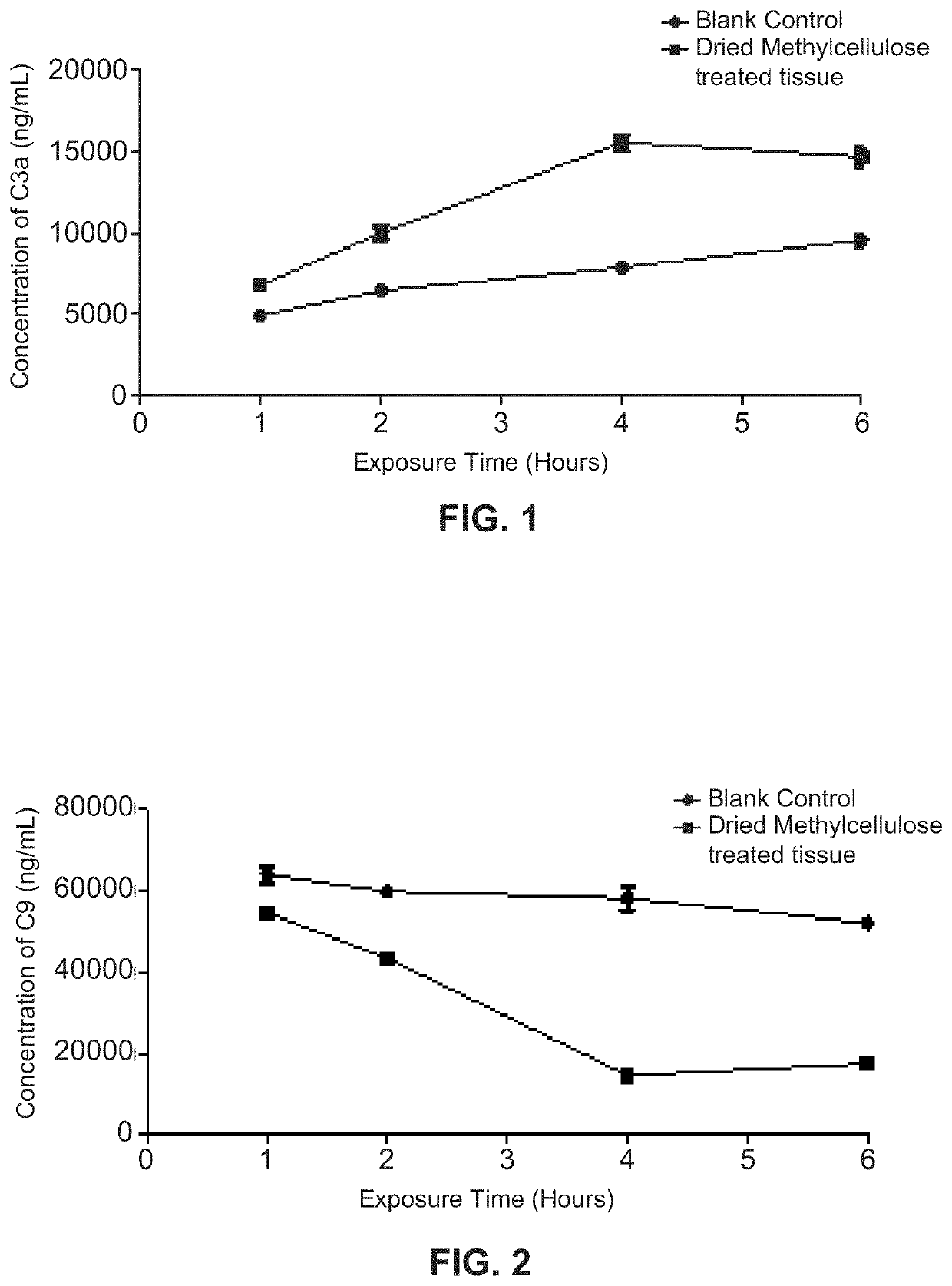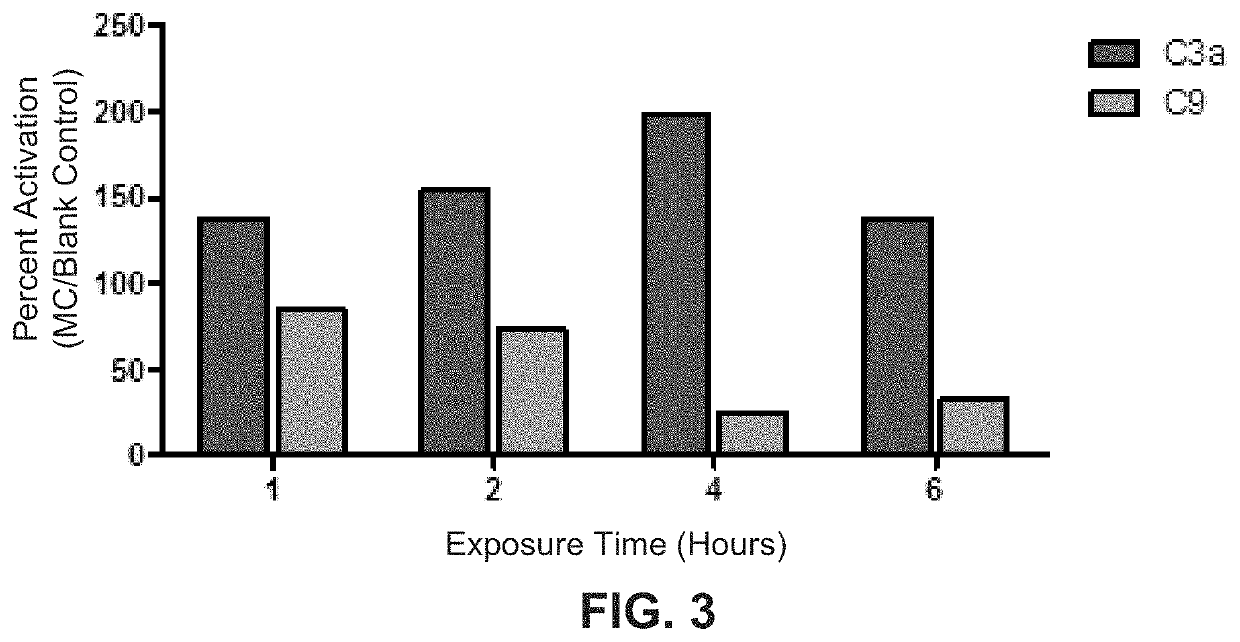Dried cellulose-treated tissue for in-vitro complement activation assays and diagnostic kits
a complement activation and tissue technology, applied in biological material analysis, sampling, instruments, etc., can solve the problems of not yet identified reliable surface-based reference material as a positive control, serious health effects of acute or chronic activation of the complement system, and inability to provide a solid reference material mediated complement response, etc., to achieve a strong positive control response
- Summary
- Abstract
- Description
- Claims
- Application Information
AI Technical Summary
Benefits of technology
Problems solved by technology
Method used
Image
Examples
example 1 preparation
of Dried, Cellulose-Treated Tissue
[0042]One liter of a 2 wt % methyl cellulose solution was prepared by heating 300 ml of water to at least 80° C., and adding 20 g of methyl cellulose powder to the hot water with agitation. The mixture was further agitated until the methyl cellulose particles were thoroughly wetted and evenly dispersed. 700 ml of cold water or ice was then added to lower the temperature of the dispersion. Once the dispersion cooled to a temperature at which the methyl cellulose became water soluble, the powder began to hydrate and the viscosity of the solution increased. The resulting solution was then cooled in a bath at 0-5° C. for about 20 to 40 minutes under continuous agitation. The solution was continually agitated for at least 30 minutes after room temperature was reached. The viscosity of the resulting methyl cellulose solution was about 15 cPs.
[0043]A piece of fresh bovine tissue was then placed into a sufficient amount of the 2 wt % methyl cellulose soluti...
example 2
Application of the Dried, Cellulose-Treated Tissue as a Positive Control in Complement Assay
example 2-1
Treatment of Serum Samples with the Dried, Cellulose-Treated Tissue
[0044]The dried, cellulose-treated tissue prepared in Example 1 above had a thickness of about 0.5-1.0 mm. It was cut into pieces by a pair of scissors, and each of the pieces had a surface area of about 15 cm2. A piece of the dried tissue was exposed to each of four 5 mL serum samples (one piece per serum sample) for four different time periods, i.e., 1, 2, 4 and 6 hours, respectively. The four resulting serum supernatants were then decanted from the tissue and frozen immediately afterwards. All four of these serum supernatant samples stayed frozen for twelve hours and then were thawed on ice prior to use.
[0045]In addition to the four serum supernatants prepared above, four 5 mL serum samples that were not treated with or exposed to any materials (i.e., untreated samples as blank controls) were decanted at four different time periods, i.e., 1, 2, 4 and 6 hours respectively, and frozen immediately afterwards. These f...
PUM
| Property | Measurement | Unit |
|---|---|---|
| temperature | aaaaa | aaaaa |
| temperature | aaaaa | aaaaa |
| vacuum pressure | aaaaa | aaaaa |
Abstract
Description
Claims
Application Information
 Login to View More
Login to View More - R&D
- Intellectual Property
- Life Sciences
- Materials
- Tech Scout
- Unparalleled Data Quality
- Higher Quality Content
- 60% Fewer Hallucinations
Browse by: Latest US Patents, China's latest patents, Technical Efficacy Thesaurus, Application Domain, Technology Topic, Popular Technical Reports.
© 2025 PatSnap. All rights reserved.Legal|Privacy policy|Modern Slavery Act Transparency Statement|Sitemap|About US| Contact US: help@patsnap.com



